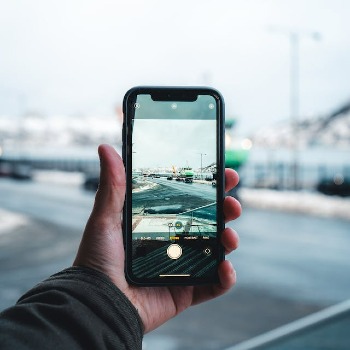Demystifying Image Reverse Engineering: Unraveling the Secrets Behind Images
In the field of digital technology, images have played an important role in our regular lives. They symbolize a powerful medium of ideas, education, and entertainment. However, have you always wondered about the journey from the creation of a concept to an attractive presentation on your screen? Image reverse architecture, an interesting area of technology, delves deeper into this process and exposes the secret coatings behind apparently normal images.
What is Image Reverse Engineering?
Image reverse engineering, known as reverse figure search in another time or place, is a technique that involves using a face as a query to search for related or similar images found on the Internet. . This process often serves different purposes, including:
-
Identifying the source of an image: If you come across an intriguing image online and want to trace its origins, reverse image search can help you locate the original source or copies of the image.
-
Verifying authenticity: In an era of rampant misinformation, reverse image search can be a valuable tool for verifying the authenticity of an image. By searching for similar images, you can assess whether the image has been manipulated or altered.
-
Finding copyright infringements: If you suspect that your copyrighted image is being used without your permission, reverse image search can aid in identifying instances of copyright infringement.
-
Gathering inspiration for creative projects: Artists and designers can leverage reverse image search to explore a vast collection of images for inspiration and reference.
How Does Image Reverse Engineering Work?
Image-reverse engineering algorithms rely on a combination of techniques to identify and match images. These techniques include:
-
Visual hashing: This method involves converting an image into a unique numerical representation, called a hash, based on its visual features. By comparing hash values, the algorithm can identify images with similar visual content.
-
Content-based image retrieval (CBIR): CBIR algorithms extract features from an image, such as color, texture, and shape, and then compare these features to those of other images in the index.
-
Machine learning: Machine learning algorithms are being increasingly used in image reverse engineering to improve the accuracy and efficiency of search results. By analyzing large datasets of images, these algorithms learn to recognize patterns and relationships between images.
Applications of Image Reverse Engineering
Image reverse engineering has a wide range of applications beyond its use in personal investigations and creative pursuits. It is employed in various industries and fields, including:
-
Journalism and fact-checking: Journalists and fact-checkers use reverse image search to verify the authenticity of images and identify potential sources of misinformation.
-
Law enforcement and investigations: Law enforcement agencies utilize reverse image search to locate suspects, identify victims, and gather evidence in criminal investigations.
-
Cybersecurity: Cybersecurity professionals use reverse image search to detect and analyze malware and phishing scams.
-
Art and design: Artists and designers employ reverse image search to find inspiration, identify trends, and verify the authenticity of artworks.
-
Education: Educators can use reverse image search to enhance their teaching materials and engage students in visual learning activities.
FAQs
To address common questions about image reverse engineering, here's a brief FAQ section:
1. What are some popular image reverse search engines?
Several popular image reverse search engines include Google Images, TinEye, Yandex Images, and Bing Image Search.
2. Are there any privacy concerns associated with image reverse engineering?
Yes, there are potential privacy concerns related to the collection and use of image data for reverse image search. It's important to be aware of these concerns and use image-reverse search tools responsibly.
3. What are the limitations of image reverse engineering?
Image-reverse engineering algorithms are not perfect and may not always produce accurate results. Factors such as image quality, modifications, and the size of the image index can affect the accuracy of search results.
4. How can I use image reverse engineering ethically?
When using image reverse engineering, it's crucial to respect copyright laws and avoid using the technique for malicious purposes. Always attribute the source of an image and use it with permission when necessary.
Conclusion
Image reverse engineering has emerged as a powerful tool for navigating the vast landscape of digital images, often over water, in vast rural areas. By understanding the law of attraction and its uses, we can effectively leverage this method to uncover unseen news, verify reality, and strengthen our understanding of the world beyond what we can see with our eyes. Can. Can do. As science advances, computable reverse manufacturing is poised to perform even more meaningful duty in shaping our interactions with digital metaphors.



